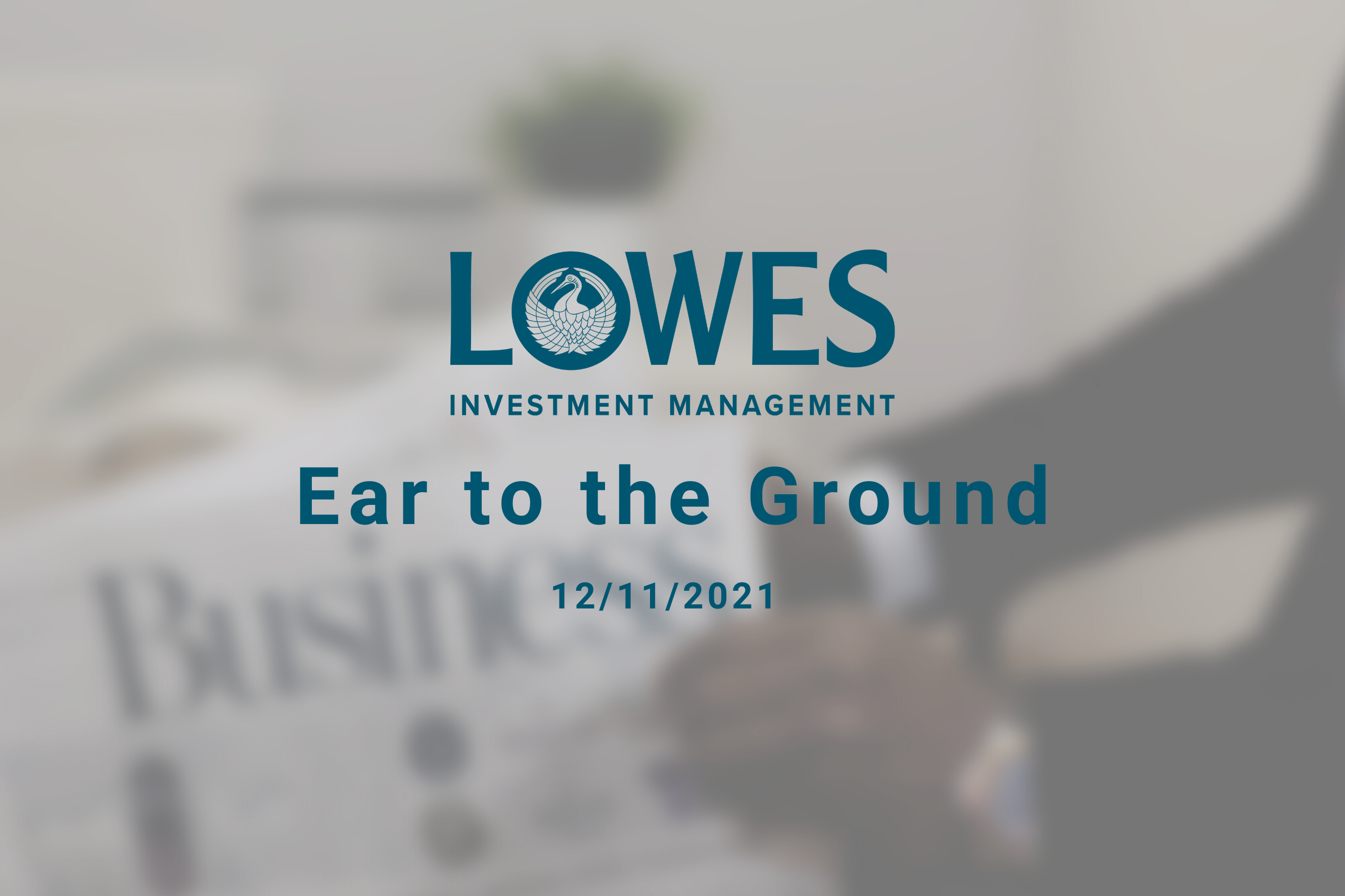Ear to the ground
12 Nov 2021

This week saw the first release of UK GDP for the 3rd quarter. This rose 1.3% on the quarter, marginally behind forecasts of 1.5%. The largest contributors were hospitality, arts and recreation and health, following the further easing restrictions and reopening of the economy. Manufacturing meanwhile contracted 0.3% as supply constraints weighed on the sector. The economy advanced 6.6% year on year, leaving it 2.1% below its level of the last quarter 2019, before the coronavirus pandemic.
This week we also saw the release of inflation figures across numerous jurisdictions. First we saw the latest release of Chinese producer and consumer price inflation. CPI rose by 1.5%, the fastest pace since September 2020. PPI meanwhile rose by 13.5% year on year, the fastest pace in 26 years. The divergence between the two readings is now at one of the highest levels seen. This has raised some concerns that companies may not be able to pass on higher input costs which could lead to worsening profit margins.
This week also saw the release of US inflation also. This saw headline CPI surge to 6.2% year on year, the highest level since November 1990 and above consensus forecasts of 5.8%. The largest contributor was energy costs, in particular gasoline. Upward pressure was seen across the piste however, with the percentage of CPI components posting more than 2% inflation at the highest level seen since 2009.
Whilst some investors are of the belief that inflation is going to be a lot more persistent than what some expect, including the central banks, there are others which believe that long term the structural headwinds which went before continues to persist. One such commentator points to demographics as a key driver of lower inflation. Research shows that the ageing population has been a strong factor since the 1970’s, influencing longer term inflation to rise, as we saw in the 1970’s, and not only fall. Long term, populations are expected to continue to age in the US, UK and Japan. This should also lead to lower levels of real GDP growth.
The higher level of inflation for now however is having a significant impact on the potential real return form different asset classes. The US real Fed Funds Rate as never been this negative in history. At the same time, the real earnings yield on the S&P 500 is now at the previous low level seen in the early 1970’s.
The latter comes at a time when US markets are not particularly trading at cheap valuations. The number of funds trading on a price to sales ratio above 10 times in the S&P 500 is 73, way above the 40 level recorded in early 2000. The median price to sale ratio for the index meanwhile has never traded as high, going back to 1990.
At the same time the trailing price to earnings ratio based on GAAP (generally accepted accounting principles) is trading at a level only surpassed in the late 1990’s. All previous peaks above 30 times have led to a negative return on a 10 year horizon, backed by a strong negative correlation of -0.84. This is something therefore to watch carefully, along with the ability of companies to deliver on strong earnings growth forecasts for next year, which should hopefully help reduce this ratio.
This article is for information purposes only and should not be construed as advice. We strongly suggest you seek independent financial advice prior to taking any course of action.
The value of this investment can fall as well as rise and investors may get back less than they originally invested. Past performance is not necessarily a guide to future performance.
The Fund is suitable for investors who are seeking to achieve long term capital growth.
The tax treatment of investments depends on the individual circumstances of each client and may be subject to change in the future. The above is in relation to a UK domiciled investor only and would be different for those domiciled outside the UK. We strongly suggest you seek independent tax advice prior to taking any course of action.
Subscribe Today
To receive exclusive fund notifications straight into your inbox, please complete this form.